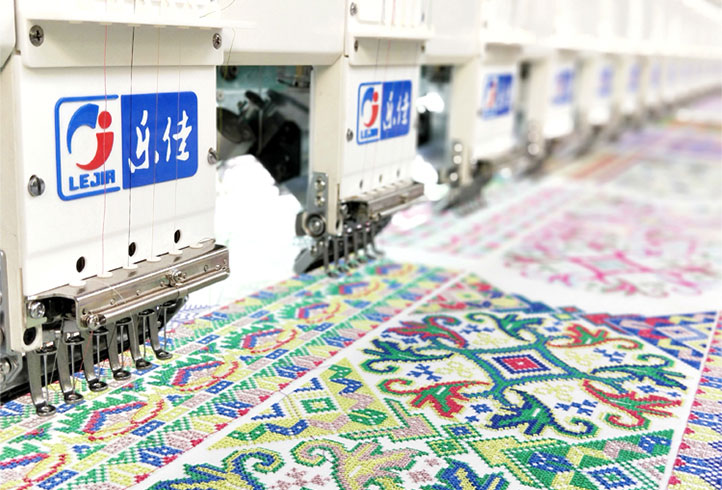Summary:In principle, computerized embroidery of stretchable textiles should be done with round-pointed machine needles. However...
In principle, computerized embroidery of stretchable textiles should be done with round-pointed machine needles. However, it is very important not to use too thick needles, because thick needles have more opportunities to touch the stretchy yarn, which increases the friction between the needle and the stretchy yarn, and the thick round needle point and special The use of 10# machine needles with round needle points is multi-faceted. More than half of the textiles with stretchability are embroidered with this type of machine needles, and satisfactory results can be obtained without worrying about taking additional remedial measures. The round point only moves the yarn to one side, unlike a pointed needle that may cut or cut through the yarn (pass through the yarn), however there is one thing to consider when using a fine needle to sew thick textiles , Due to the low strength of the machine needle, the punctured textile is often deflected too much, forming a gap, resulting in skipped stitches. In this case, be sure to use a thicker needle for trial sewing to find a suitable needle that not only has the least skip stitches, but also avoids a lot of fiber breakage.

The more layers you sew a stretch textile, the higher the rate of breakage, the friction between the layers as the needle passes through the textile, preventing the thread from stretching sideways.
When embroidering stretch textiles, people often encounter the following difficulties:
(1) The machine needle cuts or penetrates the stretchy yarn (gum or artificial gel), so that the stretchy yarn is easily broken, and the stretchability of the textile and the stability of the seam are weakened.
(2) The point of the needle may force the stretchable yarn away from the textile, or the friction between the needle and the stretchable yarn may drag the latter out of the textile and become a loop.
The greater the difference in sewing properties, the more difficult the sewing operation is. For example, the satin for corsets should be avoided to be sewed with stretchy textiles, because the former is easy to break, and a very small needle must be used; and For sewing stretchy textiles, a needle with a thick round point is required. If you sew these two textiles together, using a round point machine needle suitable for stretch textiles, the seams on the satin will be very uneven. If you use a thin needle suitable for satin, the needle may be too skewed, which will greatly increase the chance of skipping stitches.
However, the use of round point machine needles to sew other common textiles (twill, satin) and stretch textiles together will not have adverse effects. Because when sewing this type of fabric, the needle is guided between the thread gaps, and the thread breakage is also avoided. However, it should be pointed out here that the seam sewed with the round-pointed needle is less neat than the ordinary seam, because the round-pointed needle moves the thread aside. In addition to the recommended thick round and special round needle points, slightly round needle points and medium round needle points can also be used, because there are many kinds of stretchable textiles, which of the four needle point shapes mentioned above is the most suitable, Be sure to combine actual choices.
However, only a stretchable thread with a covered thread is beneficial for the round-pointed needle, so that the round-pointed needle can slide along the fiber line. There is a stretchable thread that is not covered, the round needle point may press it out of the textile, or the friction between the thread and the needle may be high, causing the former to be pulled out and become a thread loop, in this case, be sure to use A very sharp needle point instead of a round needle point to allow the needle to easily pass through the stretch thread. Be sure to take this into account when sewing tape (rope) or thin film to fleece.
In the market, there are often fashionable stretch textiles, some of which are made of man-made fibers. Because it is susceptible to heat, it is doubly difficult to sew such textiles. When sewing such textiles, it is very important to use a good quality needle, and also to reduce the sewing speed to avoid overheating of the needle.
Dusting expanded stretch textiles reduces friction between needle and thread. A similar effect can be achieved by wetting textiles with water. In this case, it is best to use a rust inhibitor, plus soap can further reduce friction. Applying dry soap before sewing can also reduce friction and damage. Spraying a slippery mist with plastic around the seams is also a way to reduce breakage.


